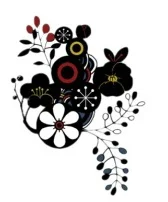
(Reference: Alexander Krivács Schrøder (DarkPhoenix), Public domain, via Wikimedia Commons)
Yamaguchi-gumi, also known as the "Sixth Generation Yamaguchi-gumi," is a notorious organized crime syndicate in Japan.
With its headquarters in Kobe, Hyogo Prefecture, this yakuza group holds the distinction of being the largest and most influential designated boryokudan (violent criminal organization) in the country.
Unlike its splinter groups, such as the Kobe Yamaguchi-gumi and the Kyushu-based Kizuna-kai, Yamaguchi-gumi has remained a formidable force in the criminal underworld.
This article will explore the history, structure, and influence of the Yamaguchi-gumi organization.
{tocify} $title={Table of Contents}
Origins and Early Days
The roots of Yamaguchi-gumi can be traced back to the early 20th century when Yamaguchi Harukichi, also known as Yamaguchi Harukichi, returned to Kobe after serving in the Russo-Japanese War.
Seeking new opportunities in the rapidly developing Kobe port, Yamaguchi joined the labor force in the shipping industry and eventually became a subordinate of Oshima Hidekichi, the leader of the Oshima-gumi.
Oshima-gumi, led by the renowned yakuza boss Oshima Hidekichi, held significant influence in the criminal underworld during that time.
This association would prove crucial in shaping the future of Yamaguchi-gumi.
After Oshima's retirement, leadership of the Oshima-gumi passed to his trusted lieutenant, Yoshida Isokichi, commonly known as Yoshida Isokichi.
Rise of the Yamaguchi-gumi
Under the leadership of Yoshida Isokichi, the Oshima-gumi continued to thrive, solidifying its position as one of the most powerful yakuza organizations in Kobe.
However, it was the appointment of Yamaguchi Harukichi as the successor to Yoshida that set the stage for the formation of the Yamaguchi-gumi.
Yamaguchi Harukichi's leadership saw a significant expansion of the organization's influence, both in terms of members and territories.
The Yamaguchi-gumi recruited a network of loyal followers, including subordinate leaders known as "wakagashira" and "shatei," who controlled their own groups of members.
This hierarchical structure allowed the Yamaguchi-gumi to maintain control over a vast criminal empire.
Organizational Structure
The Yamaguchi-gumi's organizational structure is characterized by a pyramid-like hierarchy, with the "kumichō" or "oyabun" (godfather) at the top.
Below the kumichō are the "wakachū" or "aniki" (older brothers) who lead their own subgroups within the organization.
The members of these subgroups are referred to as "shatei" or "kobun" (children).
To distinguish themselves, Yamaguchi-gumi members proudly wear the organization's emblem, a design called "yamabishi" featuring the character for "mountain" inside a diamond shape.
This emblem serves as a symbol of loyalty and belonging for Yamaguchi-gumi members.
Financial Power
The Yamaguchi-gumi's financial power is a testament to its prominence within the criminal underworld.
According to a 2014 survey conducted by Fortune magazine, the organization's annual revenue was estimated to be around 6.6 billion US dollars, equivalent to approximately 7150 billion Japanese yen.
This places Yamaguchi-gumi as the second most financially lucrative criminal organization worldwide, trailing only the Russian Mafia and surpassing even Italy's Camorra.
It is important to note that an earlier report by Fortune mistakenly claimed the annual revenue to be 80 billion US dollars (approximately 8,680 billion Japanese yen), based on a misinterpretation of a statement made by former public security investigator Suganuma Mitsunobu during a press conference.
Suganuma actually referred to the earnings of the fifth-generation Yamaguchi-gumi under the leadership of Yoshinori Watanabe from 1989 to 2005.
Influence and Expansions
The Yamaguchi-gumi's influence extends far beyond its headquarters in Kobe.
As of the end of 2020, the organization had established affiliate groups in 44 out of Japan's 47 prefectures, excluding Yamagata, Hiroshima, and Okinawa.
These affiliate groups operate under the umbrella of the Yamaguchi-gumi, maintaining a network of criminal activities throughout the country.
In addition to its extensive reach, the Yamaguchi-gumi holds a significant position among Japan's major yakuza organizations, alongside the Sumiyoshi-kai and the Inagawa-kai.
Recognized by the National Public Safety Commission as a designated boryokudan, the Yamaguchi-gumi faces constant scrutiny and law enforcement pressure.
Current Status and Challenges
The Yamaguchi-gumi has faced various challenges over the years, including internal conflicts, police crackdowns, and changes in societal attitudes towards organized crime.
In 2015, the group experienced a major split, resulting in the formation of the Kobe Yamaguchi-gumi under the leadership of Kunio Inoue.
However, the Yamaguchi-gumi remains resilient, adapting to these challenges and maintaining its status as Japan's largest yakuza organization.
Conclusion
The Yamaguchi-gumi's history and influence within the Japanese criminal underworld are unparalleled.
With a hierarchical structure, extensive territorial presence, and substantial financial power, this organization has solidified its position as the leading yakuza group in Japan.
As it continues to navigate through internal and external challenges, the Yamaguchi-gumi remains an enduring symbol of organized crime in Japan.

Your Gateway to Japan's Wonders! Immerse yourself in the beauty, culture, and adventures that Japan has to offer.
Check It Out!
You said the Kudo Kai was labeled as the largest group with 400ish members but then say Sumiyoshi Kai has over 2,000 and so does the Gumi. Seems they’re larger I’m size.
ReplyDeletePost a Comment